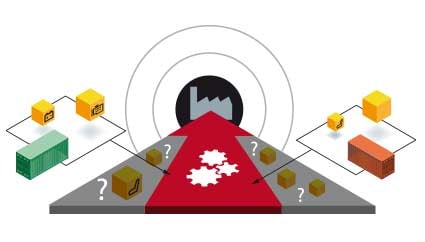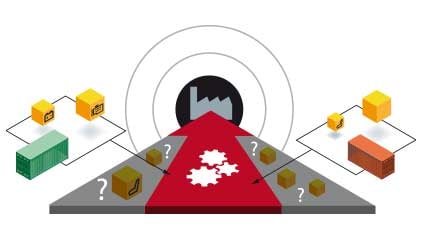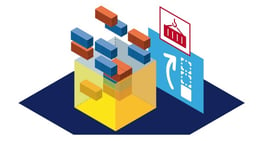5 Reasons to Adopt an S&OE Workflow in 2021
Brian Hoey - June 10, 2020

 Sales and operations execution, or S&OE, is a little bit like flying an airplane. In the modern era, you already have a host of processes that have been digitized and automated, including many of the actions that pilots themselves used to be solely responsible for. Your point of departure and destination, as well as the route that you’ll take from one to the other, is already fixed—all of which means that as a pilot your job is mostly to monitor incoming information and make slight adjustments as needed, even if those adjustments are just a fairly rote response to alerts being sent to you by your instruments.
Sales and operations execution, or S&OE, is a little bit like flying an airplane. In the modern era, you already have a host of processes that have been digitized and automated, including many of the actions that pilots themselves used to be solely responsible for. Your point of departure and destination, as well as the route that you’ll take from one to the other, is already fixed—all of which means that as a pilot your job is mostly to monitor incoming information and make slight adjustments as needed, even if those adjustments are just a fairly rote response to alerts being sent to you by your instruments.
In this way, you help prevent small deviations from the expected from mounting into a larger issue. Likewise, with S&OE workflows, planners are able to keep longer term operational plans on track by monitoring demand levels and inventory usage in real-time, in order to make on-the-fly ordering and transport planning adjustments and thereby retain value. It may not be sexy, but it can be crucial to the functioning of the modern supply chain. Given how much more volatile the global supply chain has become in the last year, there's no question that successful execution is more important now than ever.
1. To Keep Your Plans on Track
S&OE workflows are designed to bridge the gap between longer S&OP (sales and operations planning) flows and day-to-day supply chain activities. Like the pilot in our example above, an S&OE planner knows what the ultimate destination is (i.e. the longer-term operational goal), and will use any available information to make adjustments that increase the likelihood of meeting that goal. If, for example, you’re working on the rollout of a new product (for which you’ve made some rough demand estimates) and you’re trying to juggle your production ratios, an S&OE planner would be able to track demand for that product as it emerged. Instead of setting particular benchmarks and hoping that you meet them, you put yourself in a position to produce and stock your new product in the correct proportion to your existing portfolio. By keeping your longer-term objectives (stabilizing ratios, meeting long-term demand, etc.) in view, S&OE ensures that your daily supply chain activities actively support those objectives.
2. To Prevent Disruptions
In the scenario we described above, S&OE processes made it possible to bridge the gap between plans and reality. No doubt, this is a worthy function in and of itself, but what are some of the broader implications of this capability? For starters, the ability to eliminate large areas of disconnect between expectations and actual supply chain facts can help to ward off disruptions. Think about it: if your long term plans call for certain production ratios based on long-term demand estimates, and over time demand for a particular product increases unexpectedly, there’s a real danger that your buffer stock will be depleted and you’ll struggle to meet demand. This might lead to circumstances under which you’re paying extra to get rush deliveries from your suppliers so that you can make enough product, then paying for premium outbound freight to meet customer delivery expectations, all of which cuts significantly into your margins. By preventing this kind of occurrence, S&OE can help to save money and add value in the short and long term.
3. For Smarter Inventory Management
How is your inventory being managed at the moment? Is there a pen-and-ink planner who is tracking expected production and allocating space accordingly—or maybe there’s a digital manifest of everything that’s coming into or out of your warehouses? Either way, inventory management requires day-to-day attention in order to function, and it requires daily evaluation within the context of your larger operational goings-on in order to be effective. This is where S&OE comes in: yes, as a function its explicit objective is to manage the feasibility of longer term goals, but since it does so by actively managing inventory levels and transport plans, you can expect a direct positive impact on those functions in particular. For inventory management specifically, the introduction of real-time demand monitoring into the supply chain planning flow can lead to smarter, more responsive overall management. Inventory levels will reflect current demand realities as closely as possible, meaning that any given week you are unlikely to find yourself paying for unused storage space or struggling to find a place to stock your goods.
4. To Provide Real-time Feedback
S&OE thrives on real-time data streams, but it also performs an important task with regard to those data streams: it makes sense of them. In the process of leveraging this data into actionable supply chain adjustments, S&OE processes also turn data that might appear oblique or obscure into something that the entire organization can visualize and utilize. In this way, planners are able to provide their operations with real-time snapshots of their operations; not only can they offer value-additive adjustments on their own, they can also empower the creation of future cost savings by making sure that everyone has a clear idea of what, exactly, is happening in the value stream on a day-to-day level.
5. Because It Complements Industry 4.0 Workflows
By now you might be wondering, “if this process is so valuable, why had I never heard of it until recently?” The short answer is that the emergence of S&OE in the past few years is fundamentally tied to the rise of Industry 4.0. As the global supply chain becomes smarter and manufacturing becomes more connected and data-driven, planners in a variety of roles are newly poised to incorporate numerous data streams and automated workflows into their activities. In the case of S&OE in particular, the ability to manage inventory and transport routing in real time is dependent on your ability to monitor inventory levels, production processes, freight prices, and market conditions in real time—something that was scarcely possible even a few years ago. If you can rise to the level of IT sophistication and visibility required to provide these sources of data, you can empower S&OE planners to refine the functioning of your value chain. In this way, it’s a perfect complement to smart factories and other Industry 4.0-enabled systems. Since these processes are all about incorporating data and real-time feedback into existing workflows, it’s hard to imagine a better pairing. Like the pilot in our opening example, the S&OE planner can help to guide otherwise automated systems to their eventual destination. In the "new normal" supply chain, this is going to be more important than ever.
LATEST POSTS
- Understand Circular Economy in The Manufacturing Industry
- How Can Industry 4.0 IT Integration Be Achieved Smoothly?
- The Significance of Order Sequencing in Discrete Manufacturing
- How to improve your Supply Chain Management: The Power of Control Towers
- Optimizing Human Resource Scheduling in Manufacturing: A Technological Approach



